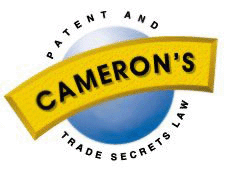
Lubrizol Corp v.
Imperial Oil Ltd.
citation(s): (1990) 33 C.P.R. (3d) 1 (F.C.T.D.)
 |
Lubrizol Corp v.
|
copyright 1997 Donald M. Cameron, Aird & Berlis
"The claims, defining the scope of the monopoly (see Harrison et al. v. Anderson Foundry Co. (1875-76), 1 App. Cas. 574 at p. 581 (H.L), are to be interpreted by applying the common vocabulary of the art. In doing so, the specification, by its phraseology, and the drawings, by their illustrations, may assist but should not be used to vary or enlarge the claims, especially if, as H.G. Fox wrote, supra, at pp. 217-8):"
"... a claim is expressed in simple and direct language or in wide or general terms whose meaning is plain and unequivocal. If the words of the claim are plain and unambiguous it will not be possible to expand or limit their scope by reference to the body of the specification. In such a case, recourse to the body of the specification for explanation, qualification or extension is neither required nor is legitimate."
At p. 24: **
"Again, the onus is on the defendant to establish that s. 36 was not met. In this case the defendant claims the plaintiffs failed to correctly and fully describe the method in clear terms to enable any person skilled in the art to do so and failed to clearly set forth the method. The defendant also alleges that the claims of the patent are broader than their disclosure and invention. When a defendant pleads non-compliance with this section, the court should not be quick to find ambiguity that will invalidate a patent, and should refuse to do so where a claim can, with some effort, be construed in a meaningful way: Reading & Bates Co. v. Baker Energy Resources Corp. (1987), 13 C.P.R. (3d) 410 (F.C.T.D.), at p.431, with a reference by Strayer J. to Procter & Gamble Co. v. Bristol-Meyers Canada Ltd. (1979), 42 C.P.R. (2d) 33, 28 N.R. 273 (F.C.A.).
Return to:
Cameron's IT Law: Home Page; Index
Cameron's Canadian Patent & Trade Secrets Law: Home Page; Index